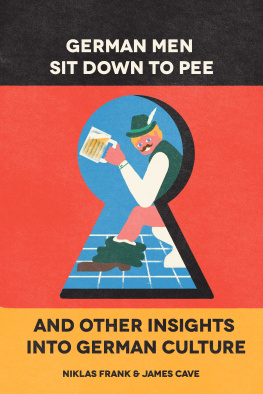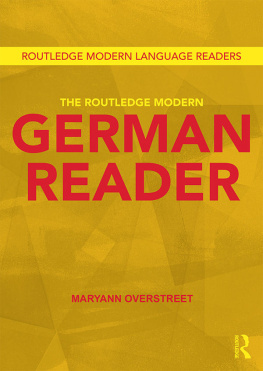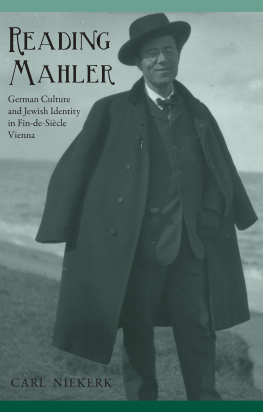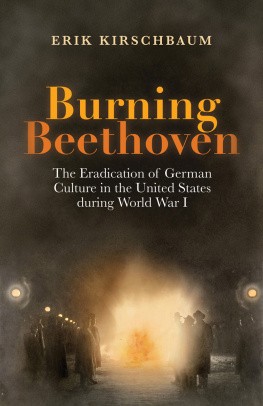Praise for Burning Beethoven
A fascinating account of a forgotten witch-hunt that has damaged America and deprived it of its rich German heritage.
David Crossland, author of the novel The Jewish Candidate
A riveting book with the timeless message that culture is not the culprit Beethoven would indeed roll over in his grave.
Rainer Hasters, executive director of RIAS Berlin Commission
A powerful retelling of a forgotten time in American history that remains as relevant today as it did a century ago.
Stephen Fuchs, Founder of German Pulse
Burning Beethoven
The Eradication of German Culture
in the United States during World War I
By Erik Kirschbaum
Editor: Cindy Opitz
2014 by Berlinica Publishing LLC
255 West 43rd St., Suite 1012, New York, NY, 10036; USA
Print book ISBN
978-1-935902-85-0
E-book ISBN:
978-1-935902-86-7
978-1-935902-87-4
978-1-935902-88-1
LCCN: 2014933317
Cover photo: Historical Society of Madison, Wisconsin
Cover Design: Jennifer Durrant, Sue Yerou
Printed in the United States
All rights reserved under International and Pan-American Copyright Law. No part of this book may be used or reproduced in any manner whatsoever without written permission except in the case of brief quotations embodied in critical articles and reviews.
www.berlinica.com
Sign up for our monthly newsletter at www.berlinica.com and get a free e-book
D EDICATION
W hen Joseph Kirschbaum was growing up in a German section of New York City, he spoke just one language with his friends and family: German. There were bastions of ethnic Germans like his community in other towns and cities across the country. In Chicago, Milwaukee, Cincinnati, St. Louis, and many other places across America, there were neighborhoods and entire districts where German was the only language spoken.
It wasnt until Joseph Kirschbaum started attending school in 1896 that he began to learn English. But German remained his first language and first love until he was in his twenties, as it was for many millions of German-Americans at the turn of the Twentieth century. Although he never set foot outside of the United States, he spoke German effortlessly and with great pleasure.
Many years and two world wars later, I asked Joseph Kirschbaum, my grandfather, for help with a high school German assignment. A frown spread across his face. No, he snapped. And then, after a few moments of unaccustomed silence from the normally affable man, he said: I dont remember any of it.
This book is for Joseph Kirschbaum, who was either forced to forget or forced to deceive.
A CKNOWLEDGEMENTS
T HERE are many people who have altruistically helped me with this book and without their help this might not have ever been finished. Tom Heneghan, Dave Graham, Cora Lee Kluge, David Crossland, Yvonne Wagner, Michelle Martin, Steven Kirschbaum, Esther von Krosigk, Karin Scandella, Scott Reid, Deirdra Preis, Angelika Kirschbaum, Danae Grant, Dean Grant, and Ingrid Kirschbaum offered insightful and motivational ideas. Thanks also to Thomas Archdeacon of the University of Wisconsin for his guidance, as well as to Cornelius Sommer, William C. McDonald and Ulrich Mller of the American-German Studies Department.
Thanks also to Olaf Zapke, Noah Barkin, and Stephen Brown at Reuters for their support while I worked on this, and to Dr. Eva Schweitzer, Berlinicas publisher, for her ideas and guidance, and to Cindy Opitz, who did a splendid job editing the manuscript.
C ONTENTS
For Yvonne and Tom
I NTRODUCTION
R obert Paul Prager was a German immigrant trying to get a job in a coal mine near St. Louis in 1918 when he was lynched by a mob of Americans eager to show their patriotism and support of the World War I effort. They accused Prager of being a German spy and got away with killing the thirty-three-year-old immigrant without punishment. Prager was only one of more than thirty Germans killed in vigilante attacks in the United States during World War I, yet his hanging death epitomizes that dark and long-forgotten era of United States history, when anti-German hysteria swept across the country.
Prager, a short man with a handlebar mustache, was hanged from a tree by a mob on the outskirts of a small town in southern Illinois. The vigilantes who killed Prager were applauded in court and in many parts of the United States for doing their part to help fight the war over in Europe. The dozen men tried for his murder were acquitted just weeks later, at the end of a hasty trial during a period of intense patriotic fervor. During the twenty months when the United States was at war in Europe, others at home were killed, seriously hurt, or otherwise maltreated or punished by the justice system, convicted of sedition on trumped-up charges, or simply interned without charges or any justification other than that they were German aliens or German-Americans. They were often falsely accused of being spies, saboteurs, or were even assaulted or abused just for being German or of German origin. Many were even persecuted simply for expressing a critical opinion about the war, even though many mainstream Americans and members of other ethnic groups had also spoken out against U.S. participation in the war before 1917.
The midnight lynching of Prager by a bumbling band of amateur executioners was the most horrific of the attacks against German immigrants and still servesa century lateras the most chilling illustration of wartime violence against German-Americans. It was a powerful and sudden eruption of virulence against what had, until then, been one of the countrys biggest, proudest, and most successful ethnic groups. It was all the more surprising, considering how respected and well-established German culture had been in the United States prior to World War I. German-Americans were often leaders in engineering, science, medicine, music, and society. The widely admired German university system had been used as the archetype for many American universities, while the industriousness and work ethic of German immigrants had made an enduring impression. All of these positive contributions made it difficult to fathom the suddenness and intensity of anti-German sentiment that swelled during World War I, engulfing the country and all but wiping out what had, until then, been a thriving German-American culture.
Nearly a century later, another wave of patriotic fervor swept across the United States in the wake of the September 11, 2001, terrorist attacks that destroyed the World Trade Center and damaged the Pentagon. Enemies of the United Stateswhether real or perceivedwere demonized. Especially Arab-Americans, who failed in the eyes of some to show enough support for the United States, were also treated as villains. Muslims in generaleven Sikhs, who were apparently targeted just for wearing turbanssuffered under racist attacks and became victims of discrimination and random assaults. About five hundred hate crimes against Arab-Americans and Muslims were recorded in the months after the September 11, 2001, terrorist attacks.
This more recent, intense wave of American patriotism included even resentment against allied countries such as France and, again, Germany, for not showing enough support for the United States war in Iraq. French fries were renamed Freedom fries in American restaurants and the Congressional cafeteria, French restaurants were boycotted, French wine was poured into gutters, and American talk show hosts, pundits, and bloggers made racists jokes about the French, depicting them as Cheese Eating Surrender Monkeys. In the eyes of patriotic Americans, there was no room for differentiation between someone holding a different point of view and someone committing treason, both in 191718 and in the years immediately after 2001.










